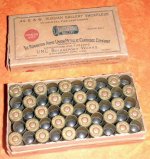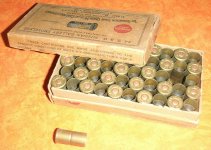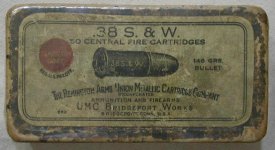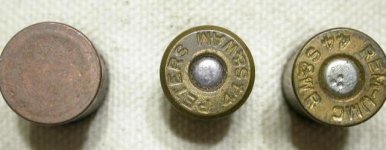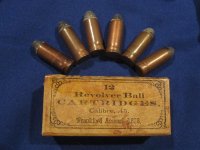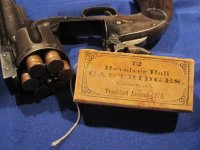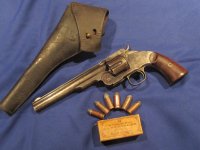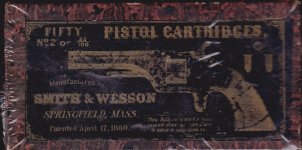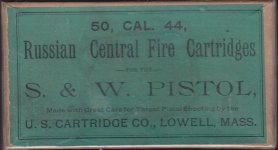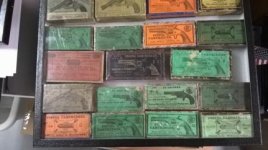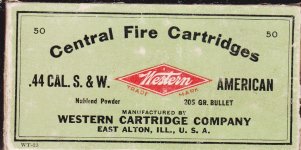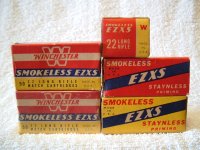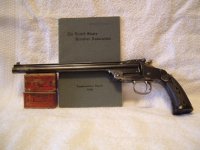Here are some more.
Frankford Arsenal Boxes for the 44 colt conversion and Remington 44 conversion (which was apparently never adopted), The Martin 44 American Cartridge for the 1st American, 1873 and 1874 Boxes for the Colt SAA, and each Box issued for the Schofields and 45 Colt loadings from 1875 through the Philippine Insurrection, except the 1881 Box, the 1901-02 20 Cartridge Box for Colt Artillery revolvers and the rare Smokeless Powder box of narrow rim loadings adopted for the Colt SAA and the Colt Model 1909 DA revolver initially shipped to the Philippines.

A few comments. Note the top two boxes in the second row, They are wider, as pre-1875, the Army used full-length .45 Colt cartridges for the SAA. The other boxes are less wide, as in August 1874 the Army went to the shorter .45 S&W/Schofield case length because they would work in both Colt and S&W Schofield revolvers then in service. In 1882, Frankford Arsenal began use of the Boxer primer instead of inside priming. Copper cartridge cases were used until 1890 when brass cases began (which were initially tinned). The standard practice was that a cavalry trooper would carry a loaded revolver in his holster and two of the 12-round boxes on his person or in his saddlebags. Of course, more was available from the supply wagon if needed. It usually wasn't. During the events leading up to the adoption of the M1911 .45 Pistol, the Army's Cavalry Board fought it on the grounds that troopers hardly ever needed more than six rounds, and they were just fine with keeping their revolvers.
The first regulation version of the military .45 revolver cartridge to use smokeless powder was specified in 1908, for the M1909 cartridge which was intended for use
only in the Colt M1909 New Service revolver. Most M1909 revolvers were sent to the Philippines, very few (only a few hundred) were used stateside. They are scarce revolvers, and I am fortunate enough to have two of them, both in very good condition. The M1909 revolver cartridge used what was essentially the longer .45 Colt cartridge case but with a wider (by about 0.02") rim flange diameter to improve extraction reliability. That particular cartridge
was not suitable for use in the Colt SAA, as only every other chamber could be loaded in the Colt cylinder due to rim interference. So a six-shooter Colt SAA became a three-shooter with the M1909 cartridge. .45 S&W/Schofield (and .45 Colt) cartridges could be used in the M1909 Colt revolver, but at the risk of extractor jamming. No issue M1909 cartridge boxes are shown in the group picture above. They were longer, 20 rounds in two rows of 10, instead of 12 rounds in two rows of six. The only manufacturer of the M1909 cartridge was Frankford Arsenal. The original loading used Bullseye powder (made by Du Pont then), which did not work out too well, requiring a later change to a bulkier smokeless powder called RSQ.
----------------------------------
"I'm sure one of the major ammo collectors will be by to comment further but does the side panel indicate smokeless ? If not likely prior to 1898 but I don't know how much prior to 1898. If it does indicate Smokeless it should be newer than 1898. "
UMC began offering a fairly complete line of handgun ammunition loaded with smokeless powder in 1894, so it is possible to find pre-1898 smokeless powder cartridges. Du Pont began commercial-scale production of smokeless powder in its own plant at Carney's Point NJ in 1894, although some European manufacturers were already making it by that time. Du Pont could not get the European manufacturing patents to make it in the US, so it had to start from scratch.

